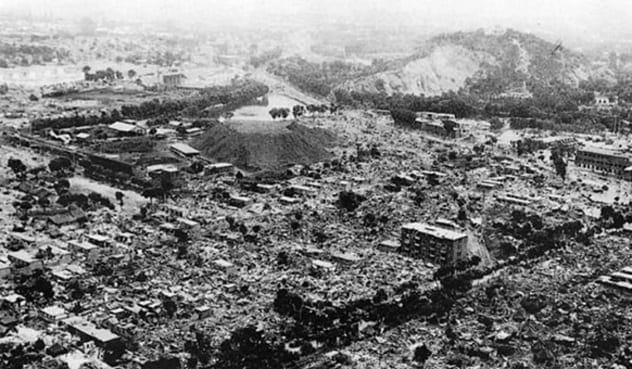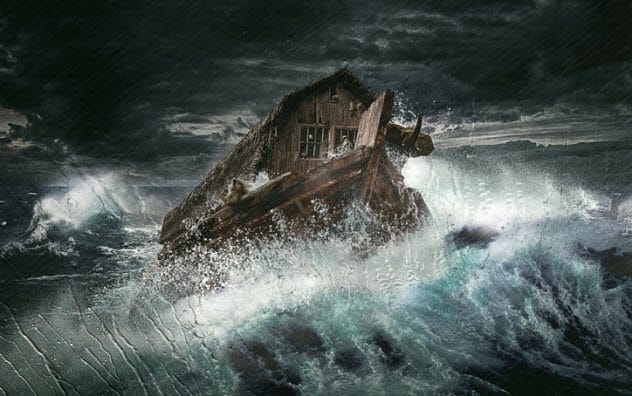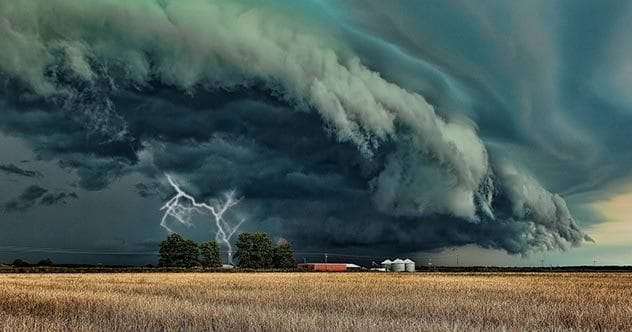Nature is full of surprises, and sometimes those surprises come in the form of record-breaking events. From bizarre weather phenomena to devastating natural disasters, here are ten times nature truly outdid itself.
The Lighthouse Of Catatumbo

Imagine relying on lightning to navigate! During colonial times, sailors used the consistent flashes of the Catatumbo lightning as a natural lighthouse. This area near Lake Maracaibo in Venezuela experiences approximately 1.2 million lightning strikes each year, earning it the title of the most electric region on Earth.
Some call it the “Eternal Storm,” but the lightning isn’t constant. It occurs on about 160 nights a year, with up to 280 strikes per hour. The thunder often goes unheard due to the distance. Scientists believe the unique geology and weather patterns of the area, including possible uranium deposits and methane, may contribute to this incredible phenomenon.
Smoke That Stayed For 6 Months

The Australian bushfires of 2020 were devastating. But the sheer amount of smoke they released into the atmosphere broke records. It was comparable to the 1991 volcanic eruption in the Philippines, the second-largest of the 20th century.
The smoke plume circled the Earth in just two weeks, a speed record for such a massive event. What’s even more astonishing is that this smoke lingered in the atmosphere for six months, far longer than typical fire plumes.
The Coldest Cloud

In 2018, scientists discovered the world’s coldest cloud hovering over the Pacific Ocean. Its temperature was a staggering minus 167.8 degrees Fahrenheit (minus 111 degrees Celsius)! This cloud was so cold it interfered with standard weather satellites.
The extreme temperature was partly due to “overshooting tops,” where the cloud’s top pierced into the stratosphere. But even considering this, the cloud was still approximately 86 degrees Fahrenheit (30 degrees Celsius) colder than any previously recorded cloud.
The Longest-Lasting Aftershocks

An earthquake shook central Washington State in 1872. For over a century, the town of Entiat continued to experience seismic activity. It turns out these weren’t new earthquakes, but aftershocks from the original event!
These aftershocks, triggered by the 1872 quake, could be the longest-lasting ever recorded, continuing for nearly 150 years.
The World’s Largest Storm

Typhoon Tip, formed over the Pacific Ocean, became the largest storm ever recorded. Reaching a diameter of 1,380 miles (2,220 kilometers), it dwarfed all other storms. The typhoon also packed an incredible punch in terms of intensity.
When it hit Japan in October 1979, it caused widespread devastation. Almost 90 people died, thousands were injured, and over 20,000 homes were destroyed.
The Truth About Beijing’s Sandstorm
In 2021, a massive storm originating from the Gobi Desert swept through Mongolia and China. While initially reported as a sandstorm, it was actually a dust storm. This distinction is crucial.
Dust particles are finer than sand, remain airborne longer, and penetrate deeper into the lungs. When this dust mixed with Beijing’s existing air pollution, it created a hazardous toxic haze.
Black Sunday
During the 1930s, the Great Plains of the US were plagued by “black blizzards,” extremely dense dust storms. On April 14, 1935, one such storm, dubbed “Black Sunday,” gave the region its infamous name: the Dust Bowl.
This storm stretched 1,000 miles (1,609 kilometers) long, blotting out the sun. Families couldn’t see each other inside their homes. Farmland was ruined, animals perished, and people were trapped. The disaster prompted federal aid, but many farmers were forced to abandon their land.
The Tri-State Tornado

In 1925, a cluster of tornadoes struck the United States. The “Tri-State Tornado” was the most destructive of them all. It carved a path 235 miles (378 km) long through Missouri, Illinois, and Indiana.
The tornado reached over a mile (1.6 km) in diameter and traveled at 70 miles per hour (113 kilometers per hour). It destroyed 164 square miles (425 square kilometers) and 15,000 homes. Experts estimate it was an EF-5, the most powerful type of tornado. With 695 fatalities, including 69 students, it remains the deadliest tornado in US history.
London’s Killer Fog Solved

London is known for its fog, but in December 1952, the fog turned deadly. The haze, which lasted five days, hospitalized over 150,000 people.
For decades, the cause was a mystery. But in 2016, researchers determined that emissions from burning coal led to chemical reactions that laced the fog with sulfuric acid. The death toll was initially estimated at 4,000, but the actual number was closer to 12,000. Thousands of animals also died. It remains the worst air pollution event in European history.
A Million-Year Rain Storm

Around 233 million years ago, at the end of the Triassic era, a rainstorm began that lasted for about a million years. This event is known as the Carnian Pluvial Episode (CPE).
Scientists now believe this deluge was caused by climate change and intense volcanic activity. The eruptions created vast lava fields. This massive downpour caused widespread extinction. However, it also reshaped the world, leading to the emergence of new species, including coral reefs, trees, reptiles, and the dinosaurs that would dominate the Earth for the next 150 million years.
These natural events remind us of the incredible power and unpredictability of our planet. They serve as a testament to nature’s ability to surprise, awe, and, at times, devastate.
What do you think about this? Leave your comment below!










